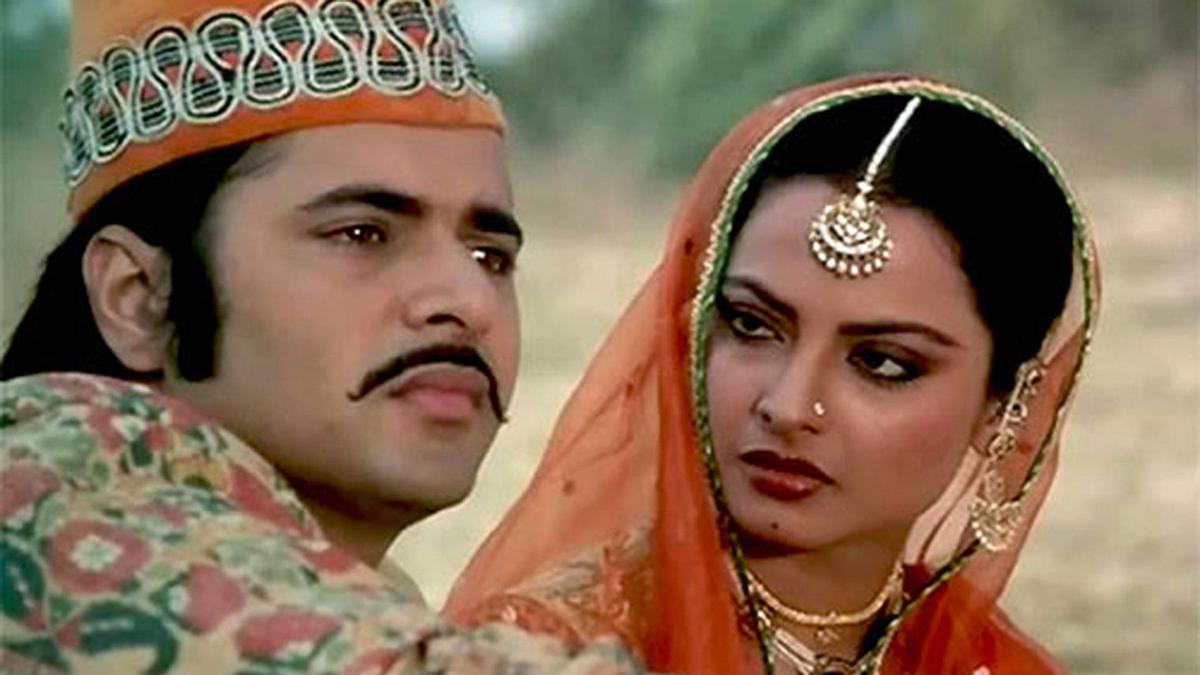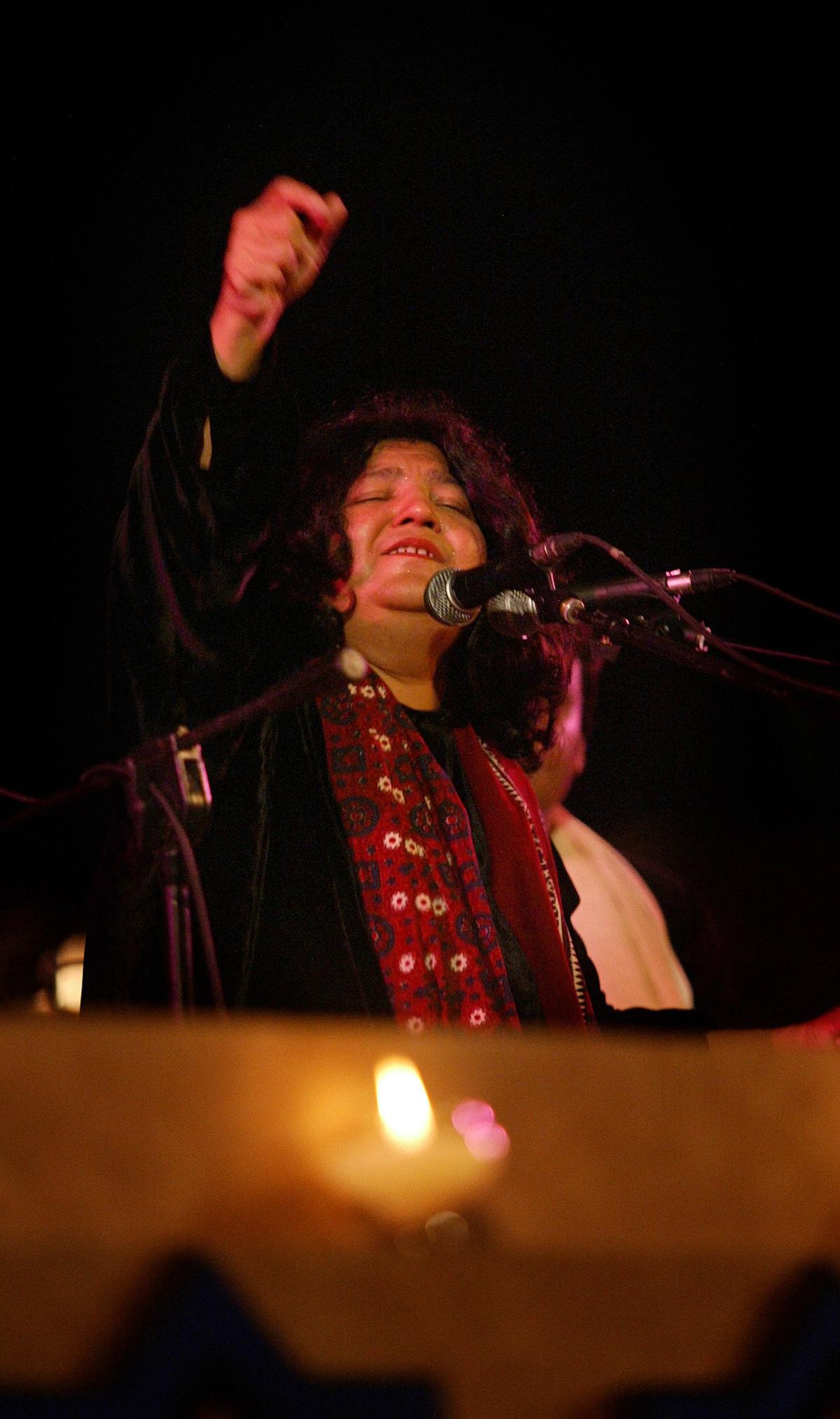Talking to Muzaffar Ali is full of old-world charm. His impeccable Urdu diction, pauses, grace… all take you back to a time that has long been etched in the pages of history. There’s an element of strangeness, some nice nostalgia when he talks about Kotwara, his ancestral home, where history sits on the mantelpiece and riches lie in the courtyard. His father, Raja Syed Sajid Hussain, was a man to be admired a lot. A talukdar married to humanism, yet a man who relished the few privileges life had bestowed upon him. “Abolition of Zamindari was a game changer. Some talukdars could not come to terms with this. As I looked at the changing social fabric, it was a sign to me that I could no longer be in this feudal zone. I had to do something on my own,” says renowned filmmaker-fashion designer and Sufi music lover Muzaffar Ali.
his interestingly titled autobiography Zikr: In the Light and Shade of Time The frankness with which he describes his early days is equally talked about for the warmth he displays while talking about his family, films and poetry. As he says, “Poetry will come and welcome me with open arms. After the unfinished saga of junieI found new meaning in poetry and music.
He was drawn to the hermitages of Khwaja Moinuddin Chishti in Ajmer and the city of saints, Delhi, something that would enrich his Sufi literature in the years to come. In 2001, it appeared in Delhi as a celebration of Sufi music with Jahan-e-Khusro. He teamed up with Pakistan’s formidable Begum Abida Parveen and soon music lovers were heading towards Raqs-e-Bismil. It was uplifting while it lasted. Would it be possible to revive the heady days? “It is really difficult in the present environment. The walls between the two countries have gone too high, but yes, if there is an opportunity in the future, why not? Sufi music connects people. Religion turns people against each other. Not one to stand down, but one to celebrate each other.
All this stemmed from his abiding love for Sufism, Chishti, Nizamuddin Auliya, Amir Khusro and Rumi. “His words gave me wings,” he says. It was these wings that saw him redefine his relationship with Kotwara, embracing a place he once viewed with studied nostalgia.
A model at the ‘Weaver of Dreams- Kotwara Ke Muzaffar Ali Ke Junoon’ fashion show in Hyderabad in 2018. Photo Credit: Ramakrishna ji
on your terms
“Once I left Kotwara, I didn’t really go back for quite some time. I wasn’t interested in the feudal stuff. Things changed after my father’s death,” says Muzaffar. In between leaving Kotwara and coming back, he moved into the world of advertising, then had a brief stint at Air India before entering the world of Hindi cinema. In 1990, he launched his textile brand House of Kotwara with wife Meera to revive the traditional crafts and textiles of the Awadh region. All on their own terms, and in their own unique way.
In the late 1970s when the common man was preferring escapist fare by Dream Merchants, he decided to do Motion, a film steeped in realism. To become his signature, Muzaffar followed his heart and chose to work with music composer Jaidev and singer Chhaya Ganguly for the film. The result was a winner called ‘Aap Ki Yaad Aati Rahi’ and a timeless melody ‘Seen Mein Jalaon Aankhon Mein Toofan’. Incidentally, the songs were penned by the reclusive Shahryar. “I chose Shahryar obviously because of our Aligarh Muslim University connection and also because his poetry resonated with me. It inspired me to do certain kinds of films. But yes, he was not made for Bombay cinema. He never shifted to Bombay,” recalls Muzaffar.

Rekha and Farooq Sheikh in ‘Umrao Jaan’ | Photo Credit: The Hindu Archives
This deep respect for Shahryar’s poetry gave rise to the timeless songs of Umrao Jaan Like ‘Aankhon Ki Masti Ke’, ‘Jastuju Jis Ki Thi’ and ‘Yeh Kya Jag Hai Dost’. Jaydev, who was initially drafted, was replaced. “Because of my proximity, I could take some liberties with Shahryar, but things didn’t work out with Jaidev sahib. Umrao Jaan, His compositions were good but lacked a certain energy. Also, I was not completely happy with the way Madhurani sang it. That’s why I went to Khayyam Sahab. And Asha Bhosle has come. To do justice to the song, she wanted to read the novel on which the film was based. She was unarmed and fully committed,” Muzaffar said about the film, which changed Asha Bhosle’s image of being a quintessential cabaret song performer. “His Urdu accent surprised many. For him each song was like a worship. She would write ‘Om’ at the top of the page, then write the lyrics, repeating them silently before going in for recording. His dedication was matched by Rekha, on whom most of the songs were shot. Each song opened a window to Rekha’s soul. everyone associated with Umrao Jaan It was as if he was listening to his inner call, just like a Sufi listens.”

Begum Abida Parveen performing at the Jahan-e-Khusro 2005 edition | Photo credit: Gurinder Osan
Umrao Jaan Became a part of history. what was it for muzaffar Mughal-e-Azam K Asif or was for Pakeezah For Kamal Amrohi “You can look at it that way,” he says.
Of course, he also made arrival soon after Umrao Jaan And Anjuman After a while. Anupam Kher debuted in the first, Shabana Azmi actually sang four songs in the second! Although any talk of his film journey would be incomplete without mentioning junieThe film is based on the peasant poetess of Kashmir, Habba Khatoon. junie Kashmir was being shot in 1989 when militancy raised its ugly head. Even as Dimple Kapadia enthralled the director with her performance, hero Vinod Khanna didn’t show up for several shooting schedules. With militancy on the rise, it was a race against time to complete the film and Muzaffar was not helped by the absence of the protagonist. Will the film ever be completed? “We lived on hope for a long time, but things never really changed,” he sighs. Today things are totally different.”